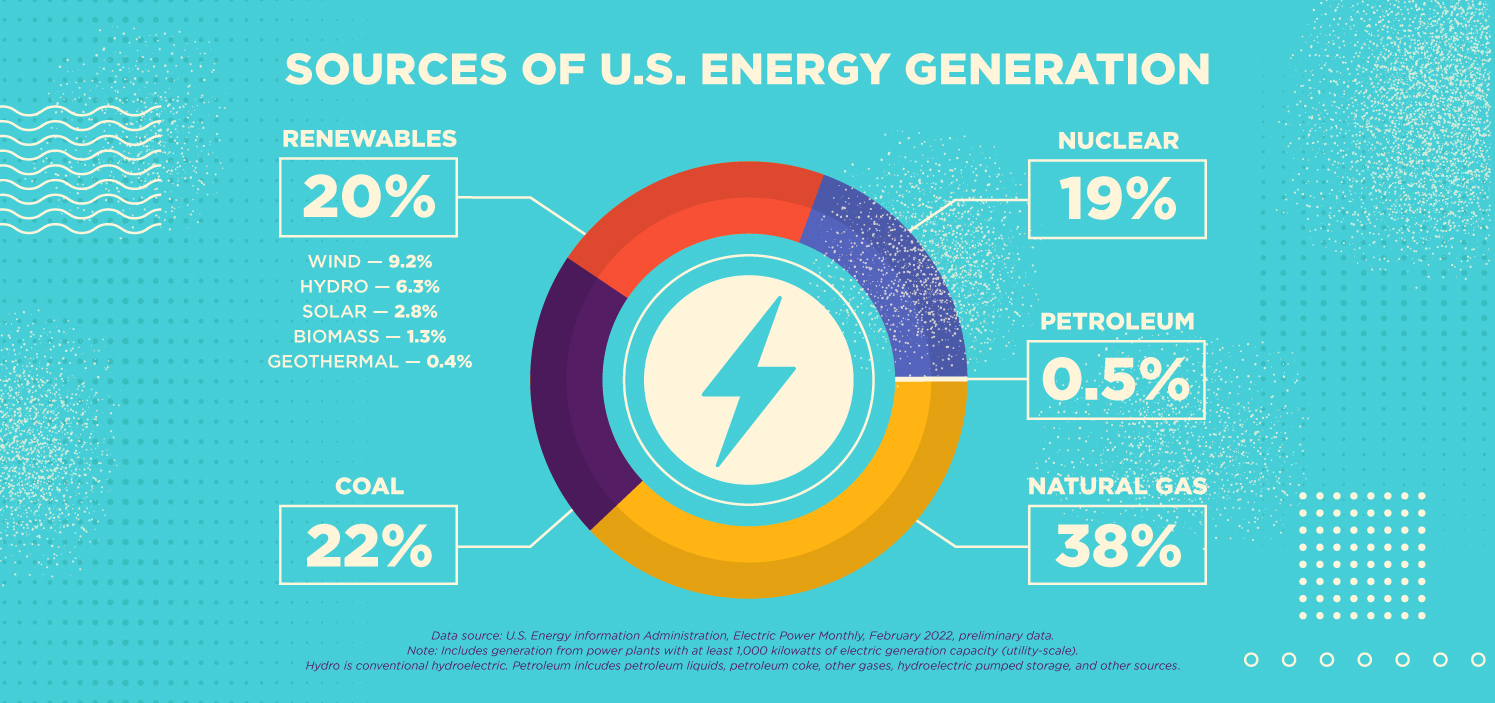Feature | October 19, 2022
Supporting Emerging Clean Energy Technologies Through Thoughtful Partnerships
A more sustainable energy future is achievable, but the path to get there requires investment in and promotion of emerging technologies that will help transform the global economy.
While conversations around sustainability and a net zero carbon economy have grown louder in recent years, the process of using the earth’s renewable resources to produce energy is not new. Hydropower has been used since ancient times, the first solar cell was invented decades ago, and wind turbines have been spinning since the first one was built back in 1887.
Although they look much different today, all clean energy technologies started with observations and ideas on how to utilize the earth’s renewable and natural resources in a sustainable way. Ideas, however, don’t just bounce from drawings on a piece of paper to manufacturing lines and into our homes and workplaces; they need guidance, feedback, investment and support so that they can mature and one day become scalable, cost-effective and accessible to further decarbonize the energy industry.
Spurring Clean Energy Innovation
As the U.S. moves toward a more sustainable economy, the need for new clean energy technologies will grow. According to a May 2021 International Energy Agency (IEA) report, roughly half of CO2 emission reductions that the world needs to achieve net zero by 2050 will need to come from technologies that are at the demonstration or prototype phase and not yet commercially available.
“For the energy transition to be successful, many different solutions must be commercialized, and it will take those who are willing to help these emerging companies grow for that to happen,” says Travis Bouslog, a director for 1898 & Co., part of Burns & McDonnell. Bouslog provides clients with innovative solutions through product development, investments and strategic partnerships and helps guide conversations with customers about these developing energy technologies. “If the support isn’t there, it will impede the transition.”
IEA maintains that many of these major innovation efforts must take place this decade in order for the market to implement new technologies in time. Public and private investment in developing new technologies is a key step along the path toward advancing the energy industry to meet established carbon reduction goals.
“For the energy transition to be successful, many different solutions must be commercialized, and it will take those who are willing to help these emerging companies grow for that to happen.”
Travis Bouslog, PE, Managing Director Managing Director
Support for advancing clean energy in the U.S. is increasing by way of various diverse avenues. The Infrastructure Investment and Jobs Act is directing billions of dollars toward new programs to support the development of clean energy technologies while the Department of Energy’s (DOE) Office of Energy Efficiency and Renewable Energy has grant money set aside to boost research and development on energy efficiency and low carbon intensity energy technologies.
Advancing clean energy technologies will require massive research and investment. While these technologies are commonly demonstrated on a bench scale in universities and federal research labs, the level of funding requires private industry — along with the DOE targeting public investment — to shorten the deployment timelines.
“Cleantech-focused venture capital provides support to get these technologies out of the laboratory and headed toward piloting, demonstration and commercialization,” Grothen says.
One of those venture capital providers is Energy Impact Partners. Made up of more than 70 investors, researchers and operators, EIP provides venture capital, growth capital or credit to early-stage companies that are advancing the transition toward a cleaner energy landscape. Burns & McDonnell, Evergy, Duke Energy, Southern Company, Ameren and FirstEnergy are among its investment partners.
“EIP sees the importance of investing in these new technologies because moving toward a more sustainable energy future benefits all of us,” Bouslog says. “It provides a unique, collaborative model that brings together innovators and industry incumbents. The model allows EIP to better screen and scale businesses and provide investment partners with industry insights and access to innovative companies. It also connects innovators with potential customers.”
One day we could all benefit from the entrepreneurs and forward-thinking companies that are facilitating a greener energy future as a result of breakthrough technologies. Arcadia is one clean energy platform that provides companies with aggregated data on energy usage and pricing. It also gives energy customers access to renewable resources, such as solar energy, through their individual utility companies.
“Right now, the investment in clean energy technology — such as biomass or geothermal energy — is bigger than the dot-com bubble ever dreamed to be at this point.”
Grant Grothen, PE, Business Development Manager Business Development Manager
Forecasting a Cleaner Energy Future
As the power industry shifts, it may be difficult to predict how decarbonization technologies will evolve or what customers will want decades from now, but it will take the platforms that exist today — along with technology advancements, effective policies and economics — to reach net zero goals.
“These emerging companies will provide benefits to energy customers who increasingly want their power to come from renewable sources,” Grothen says. “If we all work together to move these technologies forward, we will provide value to the entire energy industry.”
Thought Leaders
Travis Bouslog, PE
Managing Director | Technology Consulting
1898 & Co.
Grant Grothen, PE
Business Development Manager
Burns & McDonnell
Related Content
Article
Renewables’ Ripple Effect on the Grid
Industry
Power
Video
The Clean Path Forward: What It Will Take to Achieve 100% Renewable Energy




.png)